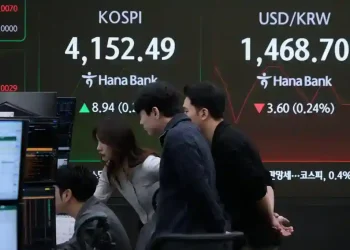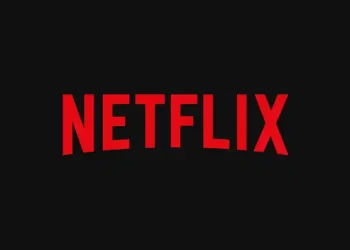No Hire, No Fire: Why the Class of 2025 Faces the Toughest Job Market in Years
Graduation day should feel like the starting line of a new life chapter. For the Class of 2025, it feels more like a dead end.
Despite a strong-looking U.S. job market on the surface — with an unemployment rate holding at 4.2% and over four straight years of job growth — new college grads are facing a reality check. Entry-level job prospects are shrinking, hiring is slowing, and student debt is mounting. The result? Many are stuck in limbo, unable to launch their careers or make good on the investment in their degrees.
The Harsh Numbers Behind the Optimistic Headlines
At first glance, things seem stable. The U.S. economy continues to add jobs. Yet, young job seekers tell a different story — one of delay, discouragement, and digital disruption.
- Unemployment for young grads (ages 22–27) has now risen above the national average — the first time that’s happened since tracking began in 1980, according to Oxford Economics.
- The unemployment rate for 20–24-year-olds stands at 8.2%, nearly double the national figure.
- For young men, it’s even worse: 9.6% are out of work, compared to 6.7% a year ago.
“It’s a very difficult job market for college graduates, and it will take time to work out of this,” says Matthew Martin, senior U.S. economist at Oxford Economics.
What’s Driving the Downturn?
A combination of factors has created this uniquely stagnant job environment, dubbed by some as a “no hire, no fire” economy. Businesses aren’t letting people go, but they’re also not bringing in fresh talent — especially at the entry level.
- Entry-level hiring is down 23% since March 2020, outpacing the 18% drop in overall hiring, according to LinkedIn.
- Trade tensions, high interest rates, and cautious corporate spending have all contributed to the slowdown.
- Meanwhile, the number of people collecting unemployment benefits has hit a four-year high — a sign that job seekers are struggling to find placements, even as layoffs remain relatively rare.
“This job market is frustrating for workers trying to get in,” says Thomas Simons, chief U.S. economist at Jefferies. “But it’s also helping keep inflation low and productivity high.”
AI and Automation: A New Threat to Entry-Level Jobs?
Artificial intelligence isn’t just an abstract future risk anymore — it’s beginning to bite.
Anthropic CEO Dario Amodei has warned that AI could eliminate up to half of all entry-level white-collar jobs within the next five years, potentially pushing unemployment into the double digits.
“We have to act now,” Amodei told CNN. “We can’t just sleepwalk into it.”
Data backs up some of those concerns. Employment for young workers in computer science and mathematics — fields particularly exposed to AI — has dropped 8% since 2022 for those under 27. For older workers, that number has remained relatively flat.
Still, not everyone is convinced AI is the culprit. “We don’t see clear evidence AI is behind the slowdown in entry-level hiring,” says Kory Kantenga, head of economics at LinkedIn. He likens the panic to early fears about ATMs replacing bank tellers — a disruption that ultimately changed, but didn’t erase, jobs.
The College Degree Dilemma
With entry-level roles drying up and student debt ballooning, the question of whether a college degree is worth it has come roaring back.
- Many grads are leaving school with tens of thousands in student loans and few job prospects.
- And while college grads still enjoy lower unemployment rates than non-grads, the advantage is shrinking.
“The value of a degree is still there,” says Kantenga. “But students need to be more strategic than ever — choose majors aligned with growth areas like healthcare, tech, and education.”
Real Stories, Real Struggles
The statistics tell one part of the story. The emotional toll tells the rest.
Jenna Macksoud, 23, applied to five to ten jobs a day for over a year after graduating from American University. For months, she heard nothing back.
“Looking back on it, it was traumatic. It felt hopeless,” she shared. With $70,000 in student debt and no job, the pressure mounted until she eventually pivoted to a role in IT business development.
Her advice? “It’s a numbers game. You have to stop getting discouraged and start getting aggressive.”
Gabriel Nash, 24, graduated in 2024 and has applied to 450 jobs in video editing and communications — and hasn’t landed one. He’s been making ends meet through part-time YouTube work while living with his parents.
“There’s this social pressure to get a job and move out,” he says. “But if no one’s hiring, what am I supposed to do?”
Parents are feeling the weight too. Rob Bastress, a tech worker from California, is frustrated watching his son struggle post-graduation.
“You push your kids to do all the right things — good grades, good school — and now those opportunities feel like they’ve vanished,” he says. He blames AI for part of the problem.
What Comes Next?
Economists agree: this isn’t just a phase. It’s a structural shift that will demand adaptability — from graduates, universities, and employers alike.
“Know where the momentum is,” says LinkedIn’s Kantenga. “It’s not just about your first job. It’s about whether you’ve got room to grow after that.”
This article was rewritten by JournosNews.com based on verified reporting from trusted sources. The content has been independently reviewed, fact-checked, and edited for accuracy, neutrality, tone, and global readability in accordance with Google News and AdSense standards.
All opinions, quotes, or statements from contributors, experts, or sourced organizations do not necessarily reflect the views of JournosNews.com. JournosNews.com maintains full editorial independence from any external funders, sponsors, or organizations.
Stay informed with JournosNews.com — your trusted source for verified global reporting and in-depth analysis. Follow us on Google News, BlueSky, and X for real-time updates.














